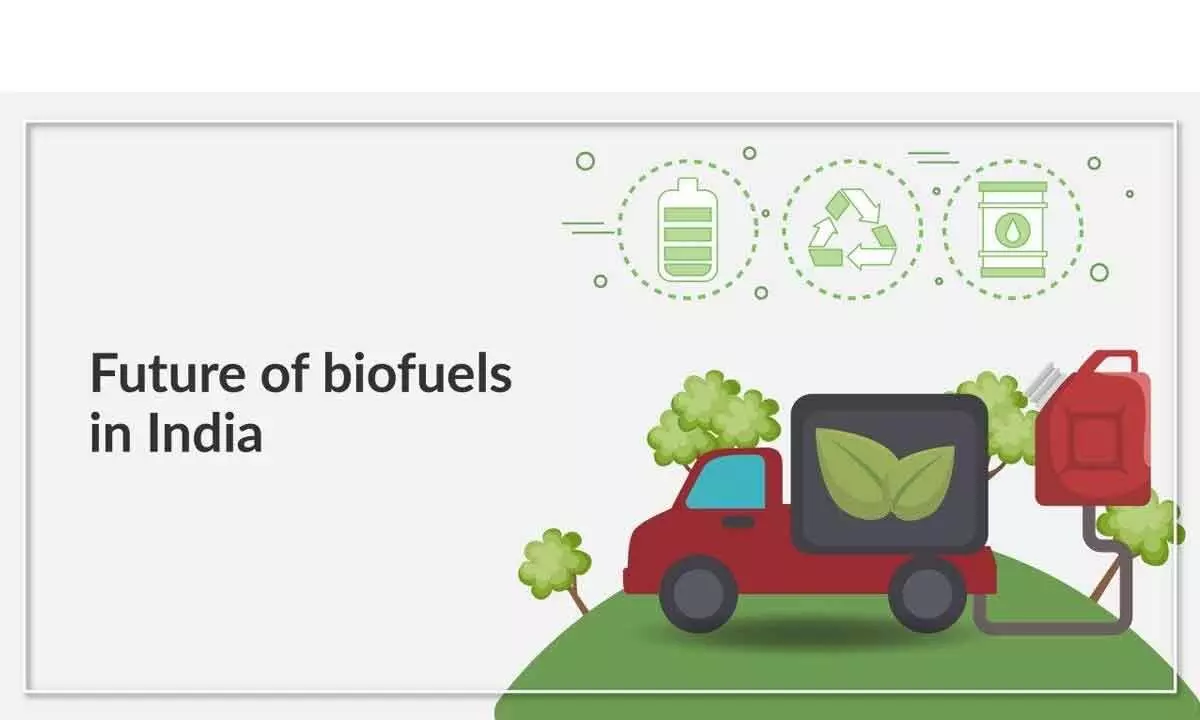Can India meet its bio-fuel targets remains the million-dollar question
Access to E-20 fuel remains limited, with only 100 stations in metros and storage infrastructure shortfall
image for illustrative purpose

The rapid growth of India’s economy and population, coupled with air pollution problems and high oil import bills, has driven the Union government to look for alternative solutions aimed at reducing its dependence on fossil fuels.
One viable solution is bio ethanol, which offers a range of economic, social and environmental benefits, including new demand for crops, boosting employment, and reducing harmful emissions.
With the target for 20% ethanol blending approaching next year, 2024 seems to be a promising year for ethanol stocks. Ethanol, a renewable and sustainable biofuel, is gaining prominence as a cleaner alternative to traditional fossil fuels.
India is expected to have a feedstock shortage and the ethanol blending rate for 2024 is expected to drop. In April 2023, India initially reached its current ethanol blending target of E-12 but will be hard pressed to reach E-20 by 2025.
Bajaj Hindustan Sugar Company, based in Mumbai, is India's largest producer of sugar and ethanol, primarily focusing on ethanol supply. Established in 1931, it emerged as a trailblazer in the country’s sugar industry.
On average, ethanol production from any raw material can earn a profit of Rs. 20-25 per litre. The raw material has a significant impact on the profit margin. The best way to save profit is to store raw materials such as sugarcane during their season.
Maharashtra is the leading state in ethanol production, with 2.68BL per annum. The other major producing states are Uttar Pradesh and Karnataka, with ethanol levels reaching 2.08 and 1.18 BL per annum, respectively. These states are leading the way in industrial ethanol production due to the abundance of feedstock. As major producers of sugarcane with well-established distilleries, they were able to make decisions effectively when it came to scaling up the industry, even with alternative grain feedstock.
To further encourage bioethanol production, the Government of India is promoting alternative feedstock such as surplus grain, rather than exclusively damaged grain, to meet the feedstock needs. Additionally, India promotes the use of corn for multiple reasons: its high potential as a raw material for ethanol, its higher market price support for farmers, and its higher agricultural yield. Corn production is expected to rise by 10 million metric tons over the next five years – allowing for more conversion into ethanol.
On the consumer side, vehicle-makers have introduced FlexiFuels and E-20-compatible vehicles to the Indian market. However, access to E-20 fuel remains limited, with only 100 stations in metropolitan cities and a limited storage infrastructure. To create a virtuous circle around ethanol production and consumption, the Centre is encouraging the domestic manufacture of these vehicles as part of the “Make in India” initiative. These policies, goals, and investments demonstrate the government’s commitment to the bioethanol industry, to reduce India’s dependence on fossil fuels.
Bioethanol producers are facing several challenges, like keeping up with increasing feedstock prices, low prices for DDGS from corn ethanol and the ban on FCI rice supply. Besides, India’s monsoon rains have recently been below normal, consequently leading to decreased rice and sugarcane crops. One of the consequences of this dynamic would be the failure to meet the 20% blending target with petroleum by 2025.
Ultimately, new technologies and innovative practices will contribute to a more prosperous bioethanol market dynamic. Whether with second-generation bioethanol gaining weight in the coming years or the potential introduction of new generations of yeasts in the Indian market, the opportunities are numerous and have already started to flourish. The expected demand for bioethanol in sustainable aviation fuels can boost the production of biofuels and lead to greater energy efficiency while making a significant contribution to reducing greenhouse gas emissions.
The ethanol sector in India offers promising investment opportunities amidst the country's increasing focus on renewable energy sources and reduced reliance on fossil fuels.
Before investing in top ethanol stocks in India, it is crucial to understand the various factors that influence the market. Moreover, you can seek advice from a financial expert who can help you select the best ethanol stocks for maximised investment returns.
The monsoon has arrived in India and is expected to bring normal levels of rainfall. Sugarcane diversion to ethanol is capped at 1.7m tonnes. The E20 blending mandate is approaching next year, and whether the government will increase the ethanol diversion for this season as well as next season is a question that remains. Again, we will have to wait to hear more until after sugar production and monsoon spreads have been reviewed.

